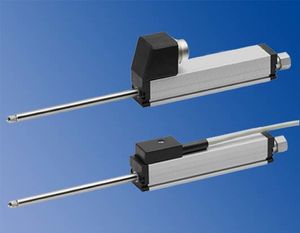Difference between revisions of "Position Sensors"
Jump to navigation
Jump to search
| Line 1: | Line 1: | ||
[[Category:Detectors, Sensors]]{{Knoppen}} | [[Category:Detectors, Sensors]]{{Knoppen}} | ||
[[File:Position sensor.jpg|thumb|right|Position Sensors]] | [[File:Position sensor.jpg|thumb|right|Position Sensors]] | ||
'''Position Sensor''' is any device that permits position measurement. It can either be an absolute position sensor or a relative one . Position sensors can be linear, angular, or multi-axis.Position sensors measure linear or angular position in reference to a fixed point or arbitrary reference. They can be used to measure distance or displacement or simply to detect the presence or absence of an object . The position information can then be processed with an external circuit to count events, monitor physical conditions, control processes, and many other applications. If the position or proximity information is combined with time measurements, then speed, velocity, and acceleration can be calculated for motion control. | '''Position Sensor''' is any device that permits position measurement. It can either be an absolute position sensor or a relative one . Position sensors can be linear, angular, or multi-axis.Position sensors measure linear or angular position in reference to a fixed point or arbitrary reference. They can be used to measure distance or displacement or simply to detect the presence or absence of an object . The position information can then be processed with an external circuit to count events, monitor physical conditions, control processes, and many other applications. If the position or proximity information is combined with time measurements, then speed, velocity, and acceleration can be calculated for motion control. | ||
Latest revision as of 04:57, 3 February 2013
Position Sensor is any device that permits position measurement. It can either be an absolute position sensor or a relative one . Position sensors can be linear, angular, or multi-axis.Position sensors measure linear or angular position in reference to a fixed point or arbitrary reference. They can be used to measure distance or displacement or simply to detect the presence or absence of an object . The position information can then be processed with an external circuit to count events, monitor physical conditions, control processes, and many other applications. If the position or proximity information is combined with time measurements, then speed, velocity, and acceleration can be calculated for motion control.
